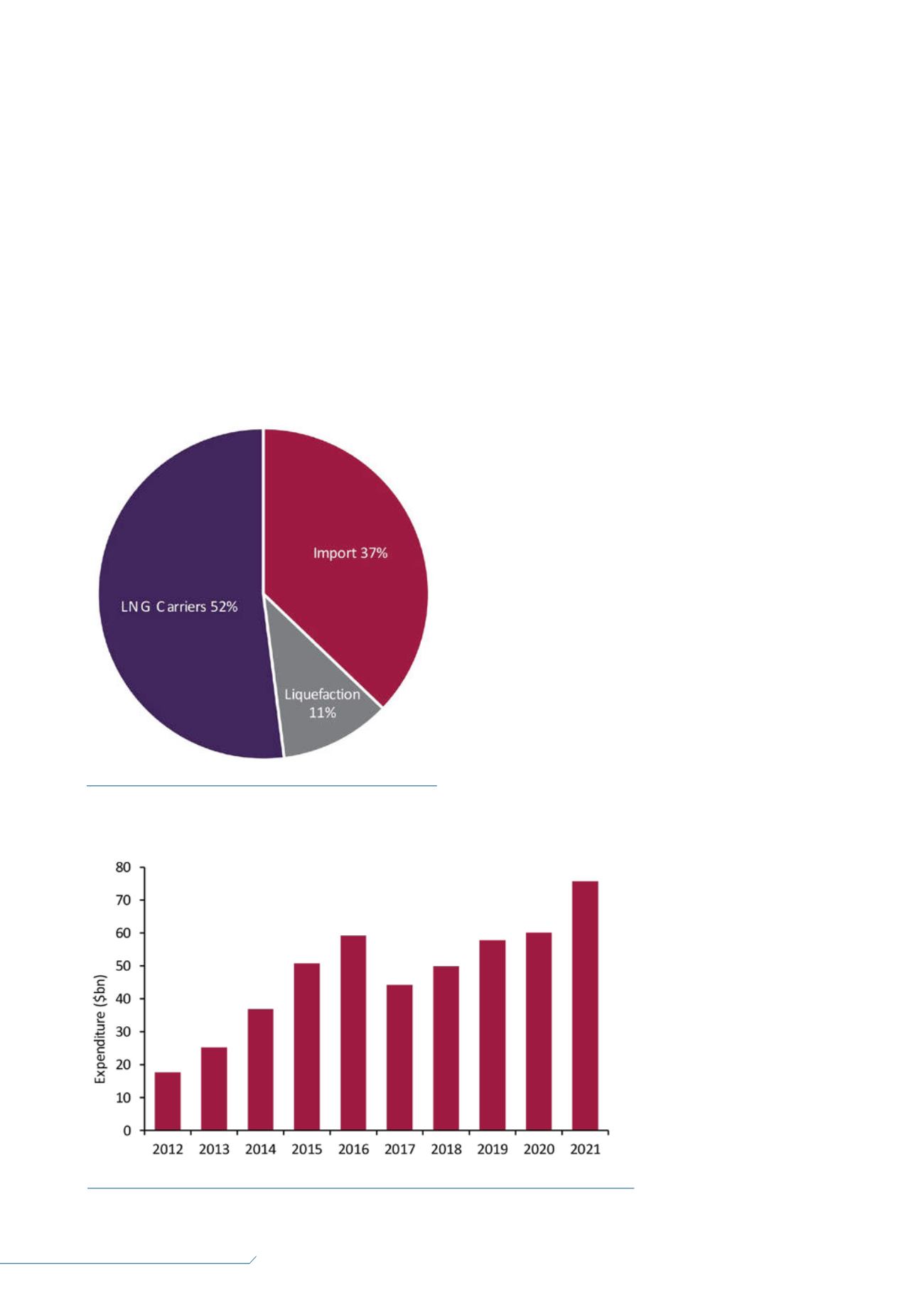
14
LNG
INDUSTRY
SEPTEMBER
2016
to be impacted in the short-term by slower than expected
economic growth and by an increase in nuclear power
generation in Japan. This is likely to result in oversupply in
the LNG market persisting beyond 2021.
Despite these near-term concerns, the long-term
outlook is largely positive. LNG demand from other
countries in Asia will ensure a demand-supply balance
over the long-term. The Chinese government’s
commitment to switching from coal to gas power
generation to reduce greenhouse gas (GHG) emissions is
expected to continue – the construction of hundreds of
coal-fired plants was recently halted. Furthermore,
economic growth forecasts for India remain strong – the
government aims to narrow its domestic demand-supply
gap by using LNG.
Global market overview
CAPEX on LNG facilities is expected to increase over the
forecast period of 2017 – 2021. This is primarily due to
a number of large North American liquefaction projects
currently under construction. Total expenditure on LNG
facilities is expected to reach US$284 billion over the
forecast period – an increase of 50% compared to the
2012 – 2016 period.
The expenditure outlook over the forecast period is
one of fairly steady growth. However, 2017 and 2018 are
likely to be weaker years, due to reduced project
sanctioning as a result of current market oversupply,
which has largely influenced LNG spot prices. In Asia,
average LNG prices in June 2016 were 69% lower than
June 2014. Despite reduced expenditure in the near-term,
spending is expected to increase in the latter years of the
forecast period. This will be supported by continued
investment in North America and an expected resurgence
in the LNG carrier market.
Over the forecast period, there will be a regional swing
in investment from Australasia to North America, with
liquefaction projects currently under construction in
Australasia expected to reach completion by 2017.
Projects that were expected to trigger a second phase of
investment have either been delayed or cancelled.
Liquefaction projects will account for the largest
proportion of total expenditure, reaching US$192 billion
over the 2017 – 2021 period. This represents an increase of
42% compared with the 2012 – 2016 period.
Import facilities will represent 14% of total expenditure
over 2017 – 2021. Overall, a total of US$38 billion is
forecast to be spent over the next six years – a rise of 25%
compared with the 2012 – 2016 period. Many of these
projects will be built in Asia, as well as countries without
import capability, enabling access to the global LNG
market.
Expenditure on LNG carriers will account for 19% of the
global total, reaching US$54 billion over the forecast
period. Due to the current lack of carrier orders,
Douglas-Westwood (DW) expects that approximately 164
potential additional units –
totalling US$33 billion – will
be required towards the end
of the forecast period. The
majority of these potential
units are expected to be
required to support
additional export capacity to
be installed in
North America.
Southeast
Asia in focus
Asia is set to marginally
increase its share of global
LNG CAPEX from 30%
during the hindcast to 33%
over the forecast period. The
construction of LNG carriers
is expected to account for
a large proportion of the
increase in expenditure,
Figure 2.
Global LNG expenditure 2012 – 2021 (source: Douglas-Westwood, World LNG Market
Forecast 2017 – 2021).
Figure 1.
CAPEX on LNG facilities in Asia 2012 – 2021 (source:
Douglas-Westwood, World LNG Market Forecast 2017 – 2021).


